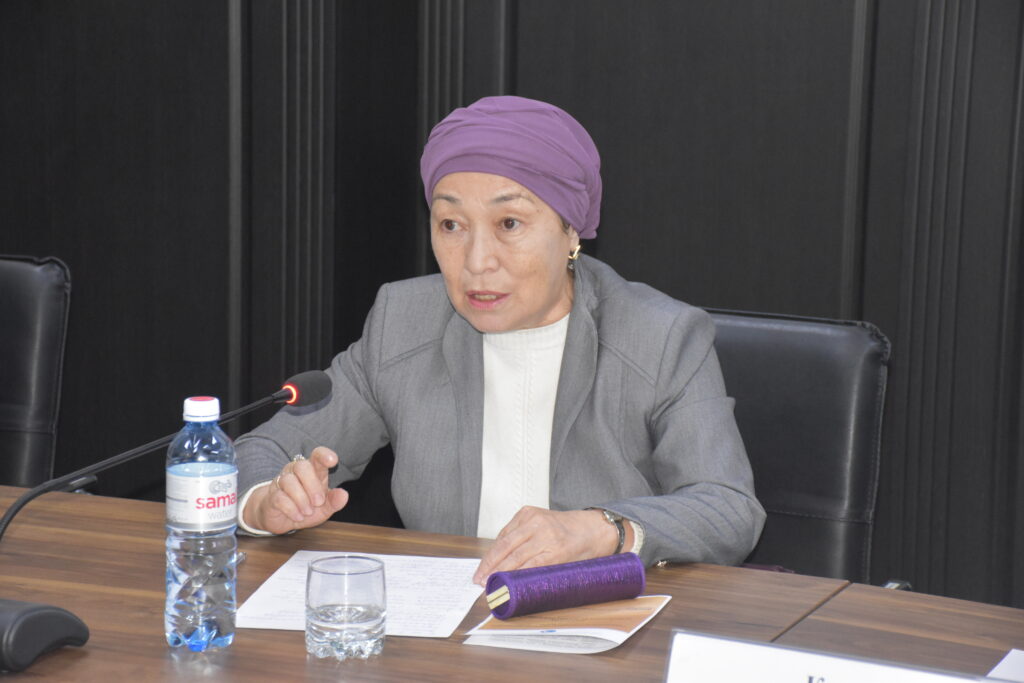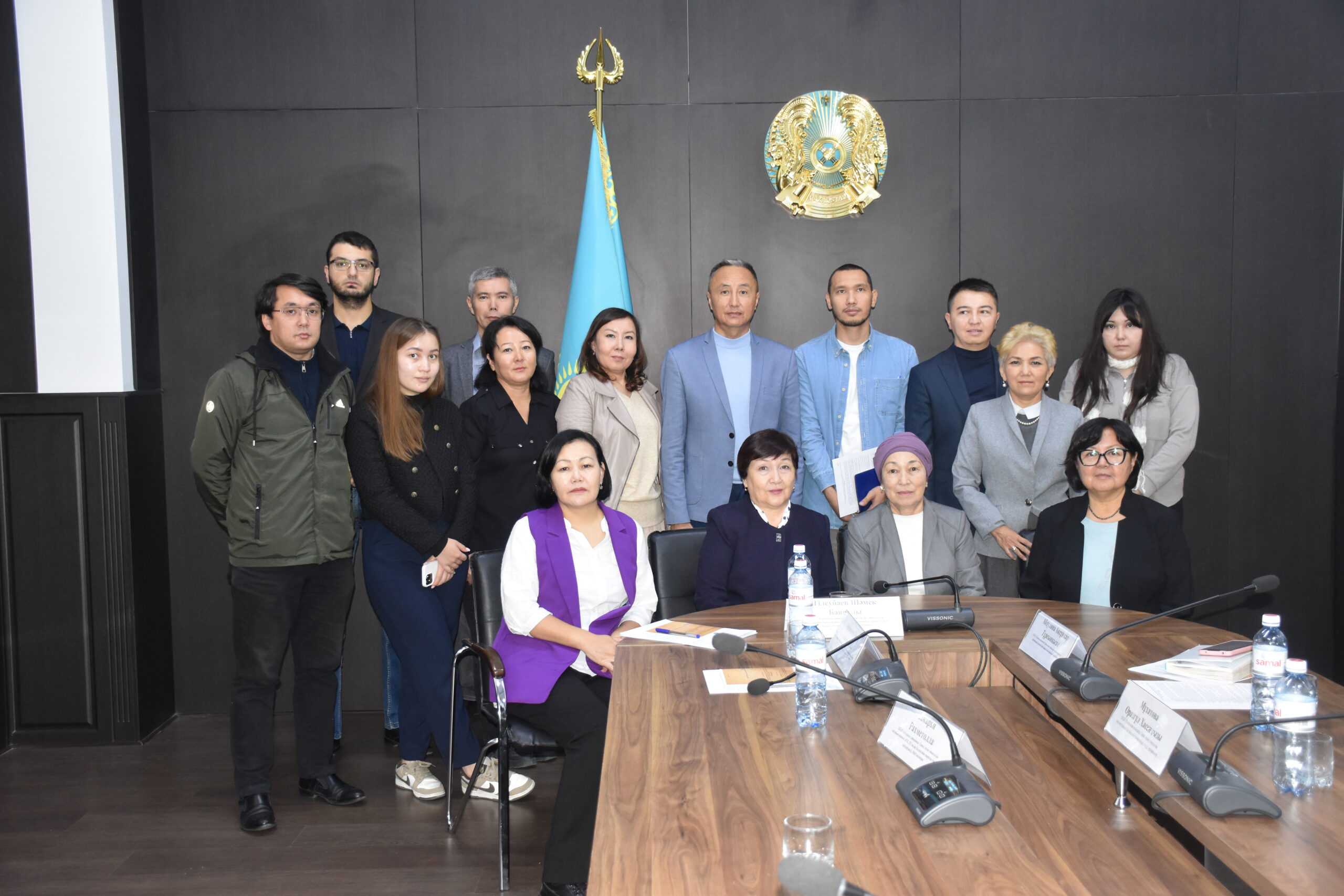Valikhanov held a round table on the topic “History of cities and urban population of the 20-30s of the XX century in Kazakhstan: a historiographical review.” Domestic historians and research scientists took part in the collegial meeting. This meeting was organized as part of the project “Cities of Kazakhstan in the 20-30s of the XX century as a sociocultural phenomenon: ethno-demographic and socio-cultural development.”
The events of the 1920-1930s entailed profound changes in the social and demographic development of the population: its size, distribution, ethnic composition, the structure of occupations, the level of literacy and education, and reproduction processes. These changes had long-term consequences and determined the characteristics of social and demographic processes up to the present day. Modernization in those regions where accelerated industrialization was envisaged (the development of coal mining, non-ferrous and ferrous metallurgy, chemical and petrochemical industries, etc.) predetermined their historical mission as one of the components of this strategy. The solution to the problems that arose during modernization was voluntary (recruitment of specialists and labor from the industrial regions of Russia and Ukraine) and forced migration (kulak exile, Gulag prisoners, etc.) to Kazakhstan from outside the republic, as well as the forced flight of hungry villagers to the cities during the hunger. The chronological framework of the project is from 1920 to 1939, since during these years population censuses were carried out (industrial urban census of 1920, All-Union population censuses of 1926 and 1939), the analysis of which will help to reveal the problem. Thus, the lack of understanding of population problems in cities over the years has put on the agenda the issue of conducting scientific research on demographic history.

Main directions of work of the round table:
– theoretical and methodological foundations of the study, new sources and historiography on the history of cities and the development of the urban population of the republic in the 1920-1930s;
– dynamics and directions of migration flows in the 1920-30s, their classification;
– analysis of quantitative and qualitative characteristics of the population of the cities of Kazakhstan: ethno-demographic (ethnicity, gender and age composition, marital status, etc.), ethnosocial (educational level, specialty, etc.);
– features of internal migrations during famine years, including forced migrations of famine refugees to the cities of Kazakhstan;
– natural reproduction of the population in cities: natural increase (fertility, mortality), marriages and divorces, family characteristics
– prerequisites for the formation of cities in Kazakhstan as centers – “laboratories of Friendship of Peoples”.
– change in the sociocultural appearance of Kazakhstan’s cities as a result of economic, socio-political processes taking place in the republic.
Opening the round table with his opening speech, Deputy Director of the Institute, Ph.D. Tleubaev Shamek Bayanuly wished the participants success. The first speaker to speak was the chief researcher of the institute, candidate of historical sciences, associate professor Aizhamal Ibragimovna Kudaibergenova, who shared the indicators of the urban and rural population based on the results of the All-Union Population Census of 1926, analyzed the composition, number, gender, etc. She also highlighted the historical events associated with the emergence of such statistics. According to the scientist, the change in urban population was directly influenced by industrialization and especially the famine of 1921-1922.

Chief Researcher of the Institute, Doctor of Historical Sciences, Professor Orazgul Khasenovna Mukhatova reported that this meeting is the first meeting organized to study the history of the cities of Kazakhstan. The historian asked: did the policies of industrialization really have a significant impact on the process of urbanization, or is it necessary to do a more in-depth analysis of archival data? She then used historical facts and previous research to provide evidence that the real process of urbanization began in the 1950s. In addition, she recommended, when conducting research on this topic, not to be limited to census materials, but to use other scientific sources, such as memoirs, periodicals, and compare these data.
In the report of the professor of the NARXOZ University, Doctor of Historical Sciences Asylbekova Zhamili Malik-Aidarovna on the topic “Urban and rural population of Kazakhstan: according to population census data of 1926-1939.” shows the population dynamics between two censuses in the republic. The author draws attention to the unique factors that contributed to the rapid growth of urban populations in the period from 1926 to 1939, such as the construction of new cities and the opening of large industrial facilities.

Chief Researcher of the Institute, Doctor of Historical Sciences Aizhan Tokanovna Kapaeva in her report spoke about the dynamics of the city’s population, linking it with the famine of the 20s of the 20th century. For example, at that time, according to the author, a large number of hungry people lived in rural areas, and the authorities in most cases organized assistance only to urban residents. Because of this, villagers were forced to leave their homes and come to the cities to save their lives.
Deputy Director of the Institute of History and Ethnology named after Ch.Ch. Valikhanova, Ph.D. Aksunkar Tursunovna Abdulina made an up-to-date report on the architectural aspect of this topic, which is ignored by researchers. She focused on the legislative normative definition of the status of settlements, such as a city, an urban settlement, a village and a town. According to the scientist, the Soviet government gave priority to issues such as the construction of industrial facilities and the construction of factories, while housing construction and meeting the domestic needs of the urban population were left to the next stage.

Head of the Department of History of Kazakhstan of the 20th Century, PhD Zakarya Rakhmetolla proposed studying the history of cities, linking it with the history of emigrants who migrated to the Kazakh Autonomous Soviet Socialist Republic. He advised focusing on issues such as their location on the territory of Kazakhstan, meeting their needs, and relocating to cities and rural areas.
Director of the Branch of the Institute of History and Ethnology named after. Ch.Ch Valikhanova in Astana, PhD Dr. Makhabbat Malikovna Kozybaeva in her research focused on ethno-demographic processes in the territory of Northern Kazakhstan, their historical background and progress. According to the scientist, the statistical data provided by official bodies is not accurate; the numerical indicators indicated in documents from each authorized body on certain issues vary. One reason for this is the influx of people from neighboring Russia, where famine was also raging, into the cities of northern Kazakhstan located near the border. In most cases, this process occurred spontaneously, so it was not possible to take into account all migrants. The author analyzed information based on census data over these years and presented it in the form of a table.
The next speaker, the leader of this project, leading researcher at the Institute, Ph.D. Altyn Slyamkaidarovna Ualtaeva, who stated that during the implementation of the project, along with the aspect of the demographic development of cities, such important issues as its socio-cultural development, ethno-demographic changes, the nature and construction of cities will be considered. She also emphasized that along with the history of the big cities of our republic, we should not lose sight of the history of small towns.

As part of this project, the institute’s research fellow, Margulan Aida Serikovna, visited the cities of Moscow and Karaganda and shared documents she received from archival funds on the history of the creation of the cities of Karaganda and Akmola.
Following the meeting, it was announced that a collection of round table materials with articles by speakers was being prepared for publication in electronic format. These articles will also serve as the basis for the development of a monograph on the topic of the project.
The following resolution was adopted at the round table:
1. Information on the materials of the round table should be included in the preparation of a future monograph;
2. It is necessary to analyze information collected from regional archives about modernization in regions where accelerated industrialization took place (the development of coal mining, non-ferrous and ferrous metallurgy, chemical and petrochemical industries, etc.) to determine its results and impact;
3. Forced migration to Kazakhstan outside the republic (deportation of warriors, GULAG prisoners, etc.), as well as forced deportation of hungry villagers to cities during the years of famine require further investigation;
4. Modern domestic historiography should focus on new theoretical and methodological positions for studying the influence and results of Soviet modernization.
5. The attention of researchers should be drawn to such pressing issues as the dynamics of the Kazakh population in cities, the social and gender composition of young people, and education.
6. The daily life of the urban population should not be ignored by researchers.




